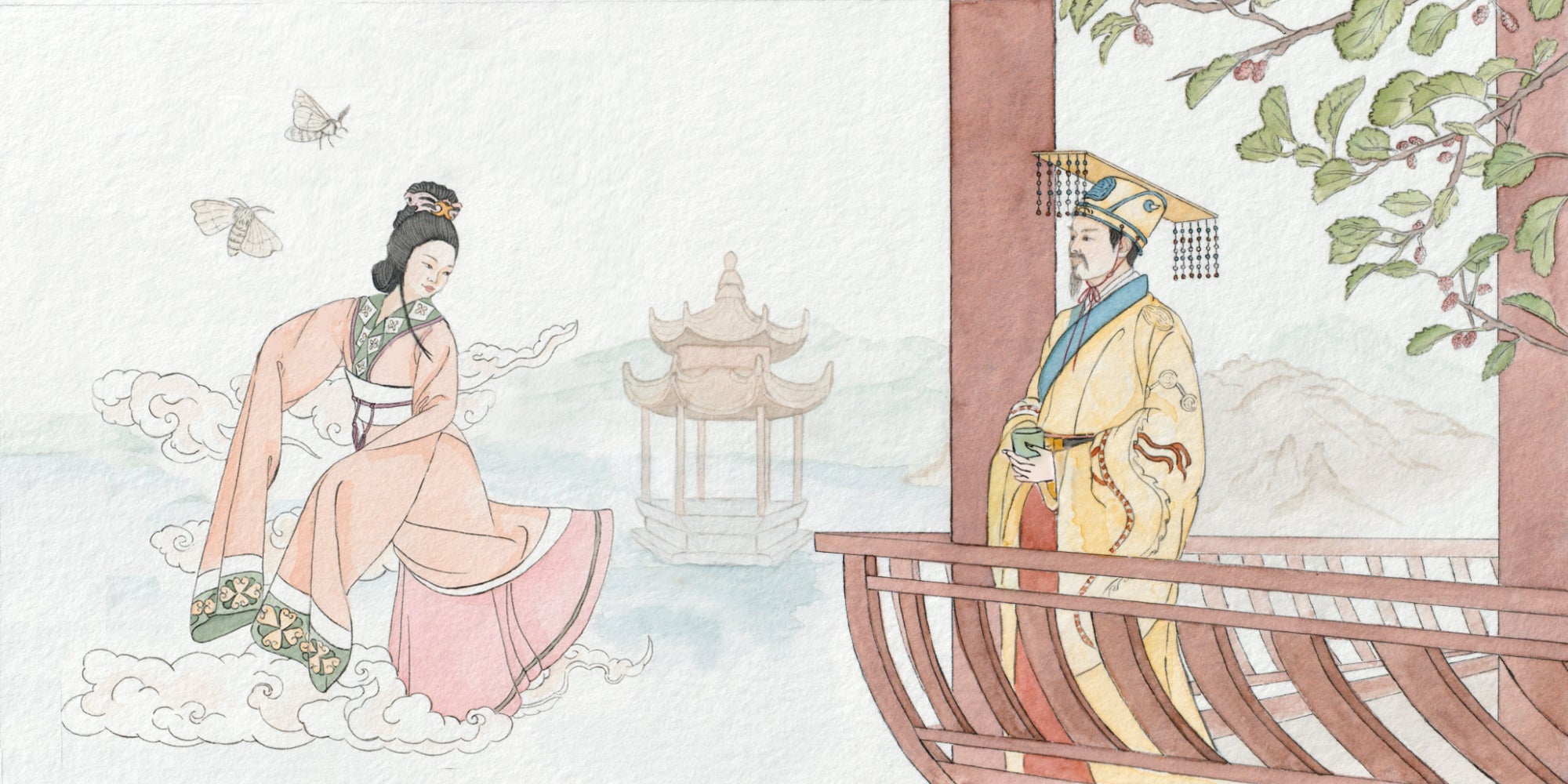
Silk: A Gift from Heaven
Ariel Tian, Contributor, Ping Ping Yu, Contributing Translate, Evan Mantyk, Editor
So smooth and exquisite, yet completely natural and useful—even today silk seems to be a material not of our ordinary rocky world, but from the treasure-filled vault of Heaven. That too is how it must have seemed to Europeans who were importing the fiber over the silk road from the far off land of China for about a thousand years. For them, China was a place more like a fairytale land from which came an extraordinary and magical culture, including silk.
What was behind this material that seemed to be a gift from Heaven?
Silk is made by silkworms while creating their cocoons. Ancient Chinese viewed the life cycle of silkworms as a symbol of the cycle of human life. A silkworm goes through four stages in its life: egg, larvae, cocoon, and adult moth. These stages represent the genesis of life, the birth of the world, the death of the physical body, and the return of the flying soul. In ancient Chinese culture, people believed that humans can become immortal by cultivating themselves through spiritual practices such as Buddhism and Taoism. This process of achieving immortality was thus sometimes called yuhua (羽化), or eclosion in English—literally, the act of emerging from the pupal case and becoming a moth.
Dating all the way back to the beginning of Chinese civilization, people believed that silk products had the power to connect with the divine. One interesting story about the origin of silkworms involves the legendary Yellow Emperor, or Huang Di in Chinese, from around 5,000 years ago. Generally believed to be the originator of Chinese civilization and a deity himself, the Yellow Emperor brought peace to the land by defeating the monstrous king Chiyou. At the ceremony to celebrate his winning the war, a fairy descended from Heaven, and turned into a long horse-faced worm. The worm produced yellow and white silk for the Yellow Emperor. The Emperor’s wife Leizu used the silk to make a special set of heavenly clothing for the Yellow Emperor to wear.
Throughout Chinese history, silk continued to hold great spiritual significance. Elderly people expecting their imminent deaths would dress in silk garments before their passing, allowing their souls to return more smoothly to the universe, or what they called “Heaven and Earth.” Along with bronze and jade wares, silk was also an important component of rituals. Ancient Chinese believed that the words written on silk could be delivered to another world by burning it—similarly, jade would be buried in the ground.
The significance of silk was also political. There was an ancient saying in Chinese about diplomacy: “Replacing weapons with jade and silk.” It means to turn a hostile situation into a peaceful one. Treasured in ancient China, silk was so valuable that during the Han Dynasty it was even used as currency and was worth than gold. In 25 BCE, the Han emperor gifted tributary states with 20,000 rolls of silk cloth.
Silkworms only eat leaves from mulberry trees, and thus mulberry trees have also carried a great deal of meaning. Ancient paintings show women with baskets collecting leaves from the mulberry tree. Mulberry groves were held to be sacred, so ancient Chinese used to hold ceremonies there to pray for their ancestors or for rain.The classical Book of Rites (禮記) states: “In ancient times, the Son of Heaven and feudal lords all publicly displayed mulberry gardens and silkworm chambers.”
Silk, silkworms, and mulberry trees have continued to be integral to Chinese civilization, carrying the significance of heavenly beauty and spiritual enlightenment. Shen Yun Collections carries on this tradition with natural silk products that treasure this fabulous heritage and carry it into the future.























